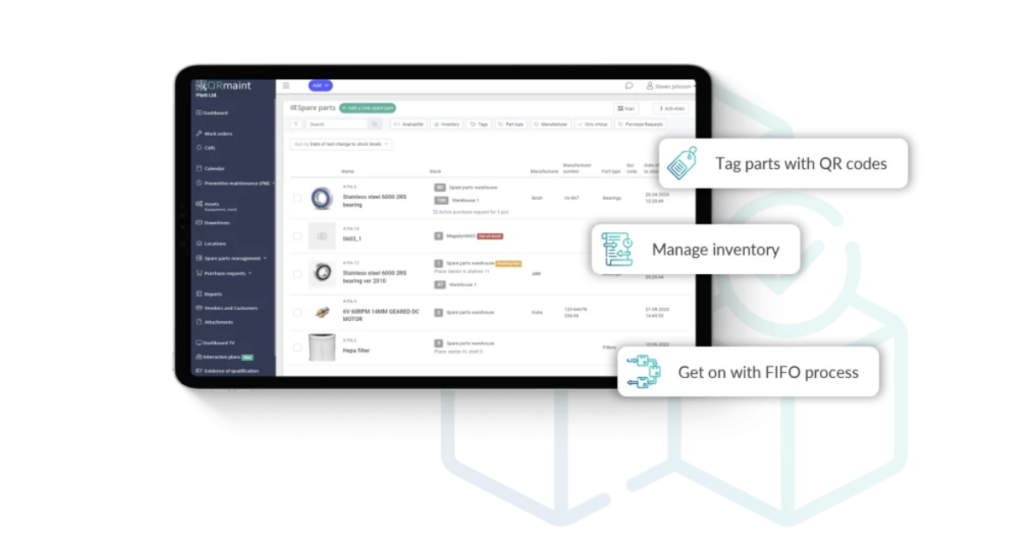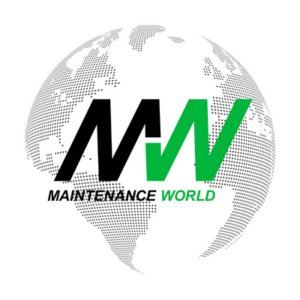Procurement Challenges of Maintenance Spare Parts Supply
Paweł Bęś, Logistics and Maintenance Marketing Expert, QRmaint
Posted 12/10/2024
Maintenance workers keep up and run multiple operations within production facilities. They face a tremendous number of challenges on a daily basis. Their work is also strictly interdependent upon various aspects beyond a particular maintenance work order.
The job of a maintenance worker is dependent on variables such as supplying spare parts or managing the spare parts inventory. Other challenges involve procuring the right supplier for spare parts. This boils down to challenges related to settling the entire supply chain internally because if you have several facilities, you also need to consider internal spare parts transfers between different warehouses.
Numerous strategies can address procurement challenges in maintenance spare parts supply. For instance, sourcing spare parts from low-cost countries can reduce procurement EBIT (earnings before interest and taxes) by 1%, while engineering EBIT can increase by 11%. It highlights the crucial role of low-cost country sourcing in leveraging the global market for cost-effective products.
Maintenance workers who deploy a CMMS system with purchase order management can utilize this huge potential. Modern CMMS systems allow you to integrate spare parts supply chain management into your maintenance operations. In this article, we’ll discuss a modern CMMS that helps tackle challenges in spare parts maintenance procurement.

What procurement challenges are faced in maintenance spare parts management?
Choosing the right supplier for spare parts for maintenance operations can be challenging for many organizations in the manufacturing industry. Most companies use the same reliable partners for years, but this approach isn’t sustainable, and they are eventually forced to find more cost-effective suppliers to maintain their autonomy and secure the business. Market fluctuations can impact spare part prices and transportation costs, which clearly shows that this area isn’t static. Maintenance departments need spare parts procurement.
Here are the challenges of spare parts procurement:
Supplier Identification and Assessment
At this point, a company should identify major suppliers that match their niche industries. Assessing a supplier’s capacity and the technology used to produce spare parts is crucial. Later, other aspects come into play that are typical of a business partner assessment. These assessments involve confirming financial health, which requires due diligence and consulting external expertise.
Cost Analysis and Sourcing Strategy
Maintenance departments should evaluate cost profiles and identify potential savings opportunities. It might be challenging when dealing with complex supply chains and fluctuating exchange rates. If we consider low-cost countries, there are many international trade regulations and quality assessments abroad to deal with. We need to determine the optimal sourcing strategy. It includes local vs. global sourcing and requires careful consideration of factors like lead times, quality, and cost.
Risk Assessment and Mitigation
Returning to the above, part of maintenance procurement is identifying and assessing potential risks. There might be many supply chain disruptions along the way, including geopolitical instability. Even if you have a producer on the local market that supplies spare parts to your facility, they can be impacted by raw material shortages or currency fluctuations. It is important to develop effective risk mitigation strategies. The spare parts supply chain should focus on diversification, contingency planning, and insurance. These are essential to minimize potential losses.

Operational Challenges to Spare Parts Procurement
Building strong relationships and trust with suppliers requires sensitivity and adaptability. You need to be open to collaborating in a balanced way. The main challenges in operations are related to logistics and supply chain complexity. When we choose low-cost spare parts suppliers from abroad, we need to manage international logistics and supply chains, including customs clearance, transportation, and warehousing. It can all be complex and time-consuming. In many cases, there are payment and financial risks as well. If we trade from abroad to purchase our spare parts, managing currency exchange rate fluctuations involves payment risks. There might be challenges such as delayed payments or non-payment, which can be significant.
Quality Control and Standards Compliance
One of the most important aspects is ensuring that products and services meet quality standards and regulatory requirements. It can be challenging, especially when dealing with suppliers at long travel distances and in other countries. The purchasing team responsible for maintaining spare parts should establish effective quality control processes remotely. Conducting regular inspections is crucial to maintaining product quality.
Undoubtedly, by understanding and addressing these challenges, each organization can effectively implement international procurement strategies. To make this job easier for both procurement departments and maintenance workers, each manufacturing company should possess a robust system for managing spare parts and handling purchase order management. The solution for this is presented by the CMMS system, which I will explain a bit more about below.

CMMS System: Dealing with the Challenges of Sourcing Maintenance Spare Parts
To lay down the main challenges in spare parts procurement isn’t just about choosing a good supplier. We need to think more holistically. The main point I want to share is that, in most cases, the procurement management teams don’t have strict knowledge about components, spare parts, materials, and the actual needs of the production facility. They’re fluent in administrative tasks, but when it comes to quality assessment and spare parts warehousing, maintenance workers, who have hands-on experience with operations and understand equipment and machine needs, play a crucial role.
Here, we see the need for close collaboration between the maintenance and procurement departments or the person responsible for choosing suppliers directly. One way to help with this is to provide the maintenance department with a CMMS system, including purchase order management features. Maintenance workers and procurement teams can use the system through system integration, enabling the company to leverage these features.
Here are the core CMMS features for spare parts order management:
Inventory Management
There is no doubt that when we talk about spare parts, we need to focus solely on spare parts management, which a CMMS includes. So, here are the capabilities that improve your procurement with a CMMS:
- Real-time tracking: Monitor stock levels of spare parts to avoid stockouts or overstocking.
- Automated reordering: Set up automatic reordering points and triggers to ensure timely replenishment from other facilities of moving spare parts between work orders if priority is higher.
- Barcode scanning: Quickly and accurately track inventory movement.
- Kitting and bundling: Group related parts together for efficient ordering and maintenance tasks.
Purchase Order Management
Professional CMMS systems have built-in functions for “Purchase Request,” where you can directly review vendors and assess which parts you need at the right time. Here are the other functions:
- Automated purchase order generation: Create purchase orders directly from work orders or inventory levels.
- Vendor management: Maintain a database of approved vendors and their contact information.
- Price tracking: Monitor price fluctuations and identify cost-saving opportunities.
- Approval workflows: Implement approval processes to ensure compliance and control.
Work Order Management
You can effectively manage spare parts requisitions with particular work orders using a CMMS system. Here’s how it works:
- Part requirements: Automatically identify required spare parts based on work order details.
- Part usage tracking: Record parts usage to inform future inventory needs.
- Part cost tracking: Monitor the cost of parts used in work orders to identify cost-saving opportunities.

Summary – Spare Parts Procurement
Procurement of maintenance spare parts is a complex process full of challenges from identifying reliable suppliers and managing costs to mitigating risks and ensuring quality. Organizations must overcome many barriers. Using the capabilities of a CMMS, companies can streamline procurement processes. There are other benefits, such as the basic thing that is always on top, which is reduced downtime and optimized overall maintenance operations.
I suggest using the CMM system not only for maintenance operations but also for procurement management. This ensures low costs for supply operations and many other activities.
Related Articles

Too Small for a CMMS? Think Again

The Role of Information Technology in Plant Reliability

The Future of CMMS





